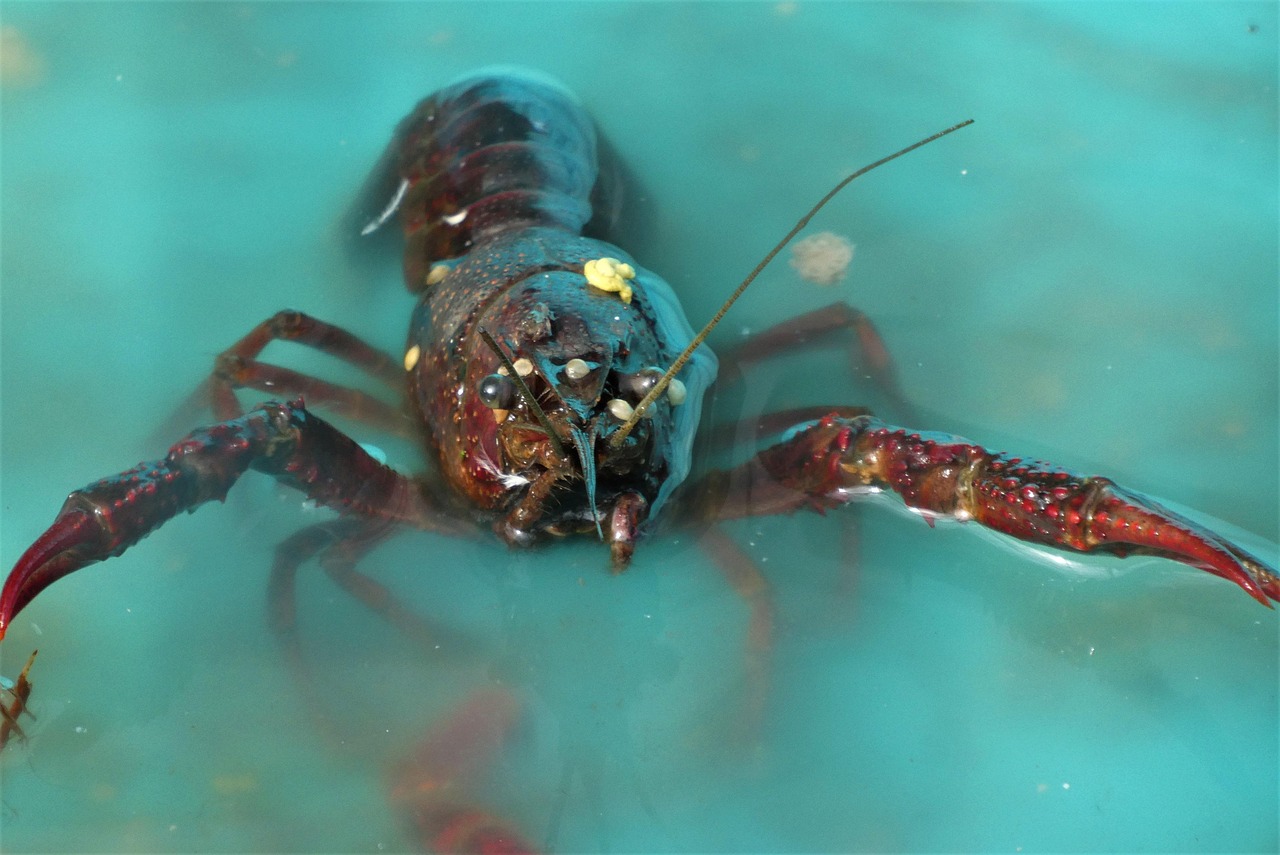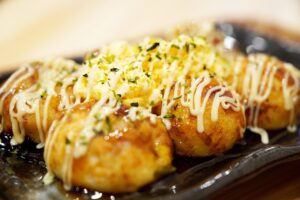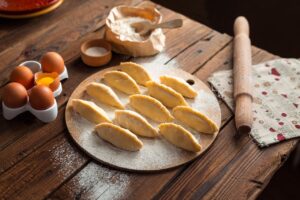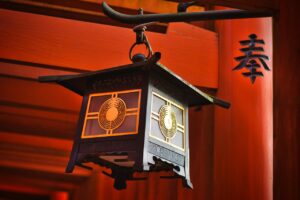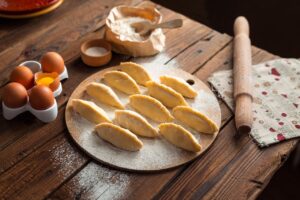Welcome to the vibrant, pulsing heart of Osaka’s culinary world. If Tokyo has Tsukiji, then Osaka proudly boasts Kuromon Ichiba Market, a place affectionately, and accurately, known as `Tenka no Daidokoro`, or “The Nation’s Kitchen.” This isn’t just a market; it’s a living, breathing testament to a city obsessed with food. For over a century, this covered arcade, stretching nearly 600 meters, has been the primary pantry for local families and the city’s most discerning chefs. But in recent years, it has transformed into something more: a spectacular street food paradise where the freshest ingredients are cooked right before your very eyes. Imagine a place where the salt-laced scent of the ocean mingles with the sweet, smoky char of grilling eel and the buttery aroma of seared Wagyu beef. It’s a sensory explosion, a symphony of sights, sounds, and smells that encapsulates the pure, unadulterated joy of eating. Here, you don’t just shop for food; you experience it, you live it, one delicious skewer at a time. This is where you come to understand why Osaka’s unofficial slogan is `kuidaore` – to eat until you drop. Prepare yourself for a journey through a wonderland of fresh seafood, a place that will redefine your understanding of market-to-mouth dining.
After exploring the market’s incredible street food, you might want to continue your culinary journey by mastering the art of making takoyaki yourself.
The Grand Arrival: Stepping into Osaka’s Kitchen
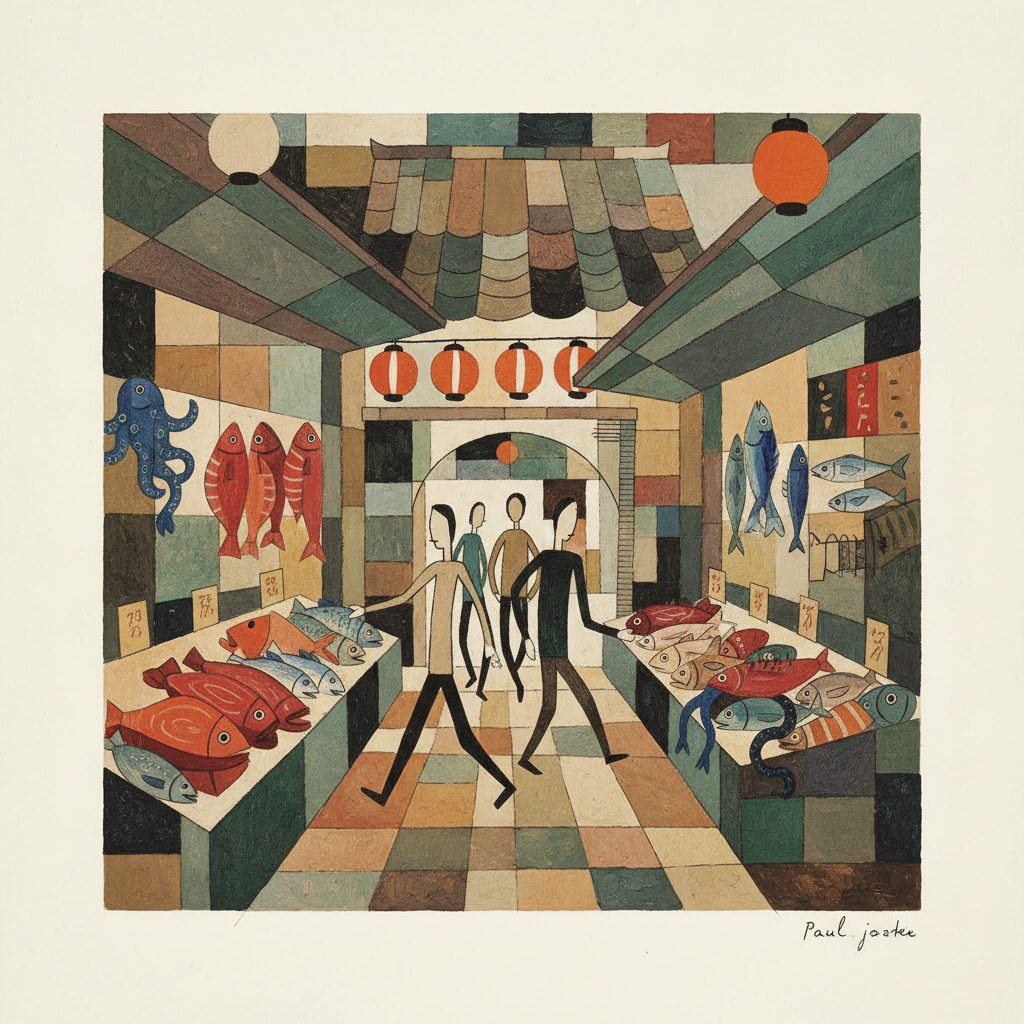
Navigating your way to Kuromon Ichiba is part of the experience, a smooth transition from Osaka’s neon-lit modernity into a world of timeless culinary heritage. The market is conveniently located just a short walk from Nippombashi Station on the Sennichimae and Sakaisuji subway lines. If you’re starting from the lively hub of Namba, it’s an easy and pleasant ten-minute stroll, a perfect warm-up for your appetite. As you approach, the character of the streets begins to change. Towering department stores give way to smaller, specialized shops, and the air thickens with anticipation and a faint, delicious promise of what lies ahead.
The market’s entrance is modest, marked by large signs and traditional lanterns, but once you step under its covered roof, the outside world fades away. You are immediately immersed in a vibrant scene. The noise is welcoming—a mix of vendors calling out daily specials, the sizzle and pop from countless grills, cheerful chatter from visitors worldwide, and the rhythmic clatter of knives on cutting boards. The pathway is narrow, with the crowd moving purposefully, a river of eager explorers passing stalls heaped with treasures from both sea and land. It’s not chaotic, yet it pulses with intense energy, a place that commands your full attention. Let your senses lead you; this is a space to be experienced, not merely seen.
A Symphony of the Sea: The Seafood Stars
While Kuromon Market boasts an extensive selection of goods, its true essence lies unquestionably in seafood. This is the main attraction, the very reason seafood enthusiasts make the journey here. The variety is astonishing, and the freshness is unmatched. Many vendors are also fishmongers, meaning the scallop you’re about to enjoy was likely swimming just hours ago. The preparation is straightforward, focused on enhancing the natural taste of the ingredient. It’s a simple, sincere cooking style that allows the quality to shine.
The Royal Scallop: A Buttery, Smoky Delight
Your first stop on this seafood journey should be one of the many stalls grilling fresh scallops, or `hotate`. You’ll easily recognize them: vendors expertly shucking large shells and placing the plump, pearly white scallops onto a grill. A blowtorch is often used to achieve a perfect golden-brown sear, caramelizing the natural sugars. Then comes the magic—a generous pat of butter is placed on the sizzling scallop, melting instantly into a bubbling pool, followed by a drizzle of savory soy sauce. The aroma alone is intoxicating. Served piping hot in its own shell, the scallop is incredibly tender, almost melting in your mouth. The flavor is a perfect blend of sweet, briny scallop, rich butter, and umami-filled soy. It’s a simple pleasure, executed flawlessly. It’s the kind of bite that makes you close your eyes and savor every moment.
The Mighty Oyster: A Taste of the Ocean
For bivalve lovers, the oysters, or `kaki`, at Kuromon are a revelation. They are often enormous, much larger than what you’re used to, and exceptionally fresh. You’ll find them piled on beds of ice, their iridescent shells shining under the market lights. You have a choice: raw or grilled. Eating one raw offers a pure, unfiltered experience. The vendor will skillfully shuck it for you, serving it with a lemon wedge or a splash of ponzu sauce. The texture is creamy and smooth, and the flavor is a clean, crisp, bracing taste of the sea. It’s like a wave of pure ocean freshness washing over your palate. If you prefer cooked oysters, the grilled variety is equally delightful. Gently kissed by the flame, they become slightly firmer and develop a subtle smoky flavor that beautifully complements their natural brininess. Watching them sizzle on the grill is a spectacle in itself.
Uni Gold: The Cream of the Sea
Sea urchin, or `uni`, can be a polarizing food, but at Kuromon Market, it has the power to convert even the most doubtful. Forget any previous encounters with less-than-fresh uni. Here, it is a delicacy of the highest quality. You’ll see vendors carefully cracking open the spiky, dark shells to reveal the vibrant golden-orange lobes inside. It’s often served right in the shell, a beautiful and rustic presentation. The key to great uni lies in its freshness, which determines its flavor and texture. At Kuromon, it is sublime. The texture is astonishingly creamy, like a rich, decadent ocean custard. The flavor is complex—subtly sweet, slightly briny, and bursting with deep, savory umami that lingers beautifully on the tongue. It coats your mouth in luxurious richness that is truly unforgettable. For the fullest experience, scoop a piece with a spoon and let it dissolve slowly. It’s a moment of pure culinary bliss.
Maguro Majesty: The Art of Tuna
No conversation about Japanese seafood is complete without honoring tuna, or `maguro`, and Kuromon Market is an exceptional place to appreciate this king of fish. Several shops specialize in premium tuna, and you can often witness the exhilarating sight of a whole tuna being expertly carved by a master fishmonger. The precision and skill are captivating. The stalls offer various cuts, allowing you to sample a range of flavors and textures. You’ll find `akami`, the leaner, deep-red meat with a clean taste. Then there’s `chutoro`, the medium-fatty cut, offering a perfect balance of rich flavor and tenderness. For the ultimate indulgence, there is `otoro`, the fattiest section from the tuna’s belly. It’s pale pink, almost marbled meat that is so rich and buttery it literally melts in your mouth, releasing waves of incredible flavor. You can buy it as sashimi to enjoy on the spot or as a small `donburi` (rice bowl). Sampling all three cuts is a fantastic way to understand and appreciate the subtle differences of this remarkable fish.
More Treasures from the Deep
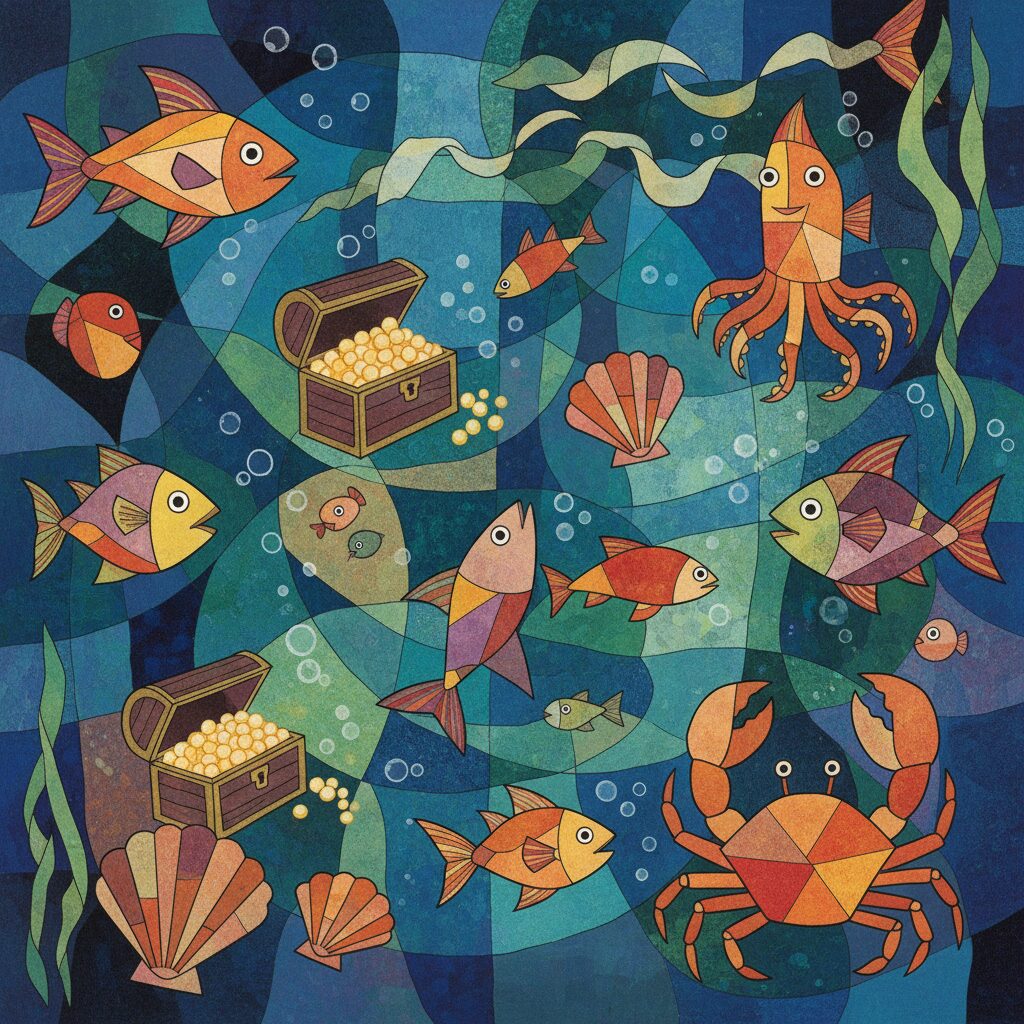
Beyond the headliners, the market is brimming with other aquatic treasures waiting to be discovered. Each stall presents a new temptation, a new flavor to savor. This is a place where culinary curiosity is generously rewarded.
The Charms of Unagi and Anago
The smoky, sweet aroma of grilled eel is one of Japan’s most iconic scents, lingering thickly in the air at Kuromon. Vendors can be seen grilling skewers of `unagi` (freshwater eel) and `anago` (saltwater eel) over glowing coals. The eel is repeatedly brushed with a sweet and savory `kabayaki` sauce, a glaze typically made from soy sauce, mirin, and sugar. This method produces a beautiful, caramelized crust while keeping the flesh tender and moist. The outcome is a perfect harmony of smoky, sweet, and savory flavors. The rich, fatty unagi has a bold taste, while anago is often lighter and more delicate. Served on a skewer, it makes an ideal handheld treat to enjoy while strolling through the market.
The Legendary Fugu Experience
For the daring eater, Kuromon offers the opportunity to try `fugu`, the notorious pufferfish. Though known for its potential toxicity, it is perfectly safe to consume in Japan when prepared by licensed, highly skilled chefs. Several specialty shops in the market serve fugu in various forms, from delicate sashimi (`tessa`) to fried pieces (`fugu karaage`). The sashimi is sliced paper-thin, featuring a unique, slightly chewy texture and a subtle, clean flavor. It’s more about the experience and the texture than a strong taste. Sampling fugu is a one-of-a-kind cultural experience and a testament to the extraordinary expertise of Japanese chefs.
Crab Legs and Cephalopod Surprises
Don’t miss the striking displays of crab legs, especially the giant legs of King Crab (`tarabagani`) and Snow Crab (`zuwaigani`). They are often steamed or grilled and served simply, allowing the naturally sweet and succulent meat to shine. Cracking open a freshly cooked crab leg and pulling out the tender meat is a deeply satisfying delight. You’ll also find a variety of octopus (`tako`) and squid (`ika`). A particularly unique and popular snack is `takotamago`, a small candied octopus with a surprise inside: a cooked quail egg cleverly stuffed into its head. It’s a delightful mix of sweet, savory, and chewy and a true Kuromon specialty. Grilled squid on a stick, seasoned with soy sauce and spices, is another smoky, chewy, and utterly delicious choice.
Beyond the Sea: A World of Flavors
While seafood remains the primary attraction, Kuromon Ichiba is a well-rounded culinary destination, offering something to satisfy every taste. Taking a moment away from the ocean’s offerings to explore these other delights adds depth to your gastronomic experience and gives a fuller understanding of what makes this market truly unique.
The Wagyu Sizzle
Even amidst a seafood haven, the aroma of premium Japanese `Wagyu` beef sizzling on a hot plate is enough to catch your attention. Several butcher shops have set up small grills to let customers sample their high-quality beef. You can select your favorite cut of beautifully marbled meat, which they will cook fresh on-site, usually seasoning it simply with a bit of salt and pepper. The beef is incredibly tender and rich, with a deep, buttery flavor derived from its intricate marbling. As the fat melts during cooking, it bastes the meat, creating an exceptionally juicy and flavorful bite. This indulgence offers a luxurious contrast to the market’s seafood flavors.
Fruits, Sweets, and Savory Snacks
Don’t miss the fruit stalls, showcasing the finest Japanese produce. Depending on the season, you might discover giant, fragrant strawberries—including the coveted white variety—perfectly round melons that come with a high price tag, and clusters of exquisite grapes. Many vendors offer freshly squeezed juices and fruit smoothies, providing a refreshing and healthy balance to the rich, savory street foods. For a quick bite, seek out shops selling `tamagoyaki`, the slightly sweet, rolled Japanese omelet often served on a stick. You can also find stalls offering `o-den`, a warming winter stew featuring ingredients like daikon radish, fish cakes, and boiled eggs simmered in a light, flavorful dashi broth. No visit is complete without exploring the `tsukemono` (pickle) shops, where colorful barrels hold a wide variety of pickled vegetables, from ginger and cucumber to more unusual types, offering a tangy, crunchy palate cleanser.
Practical Tips for Your Kuromon Adventure
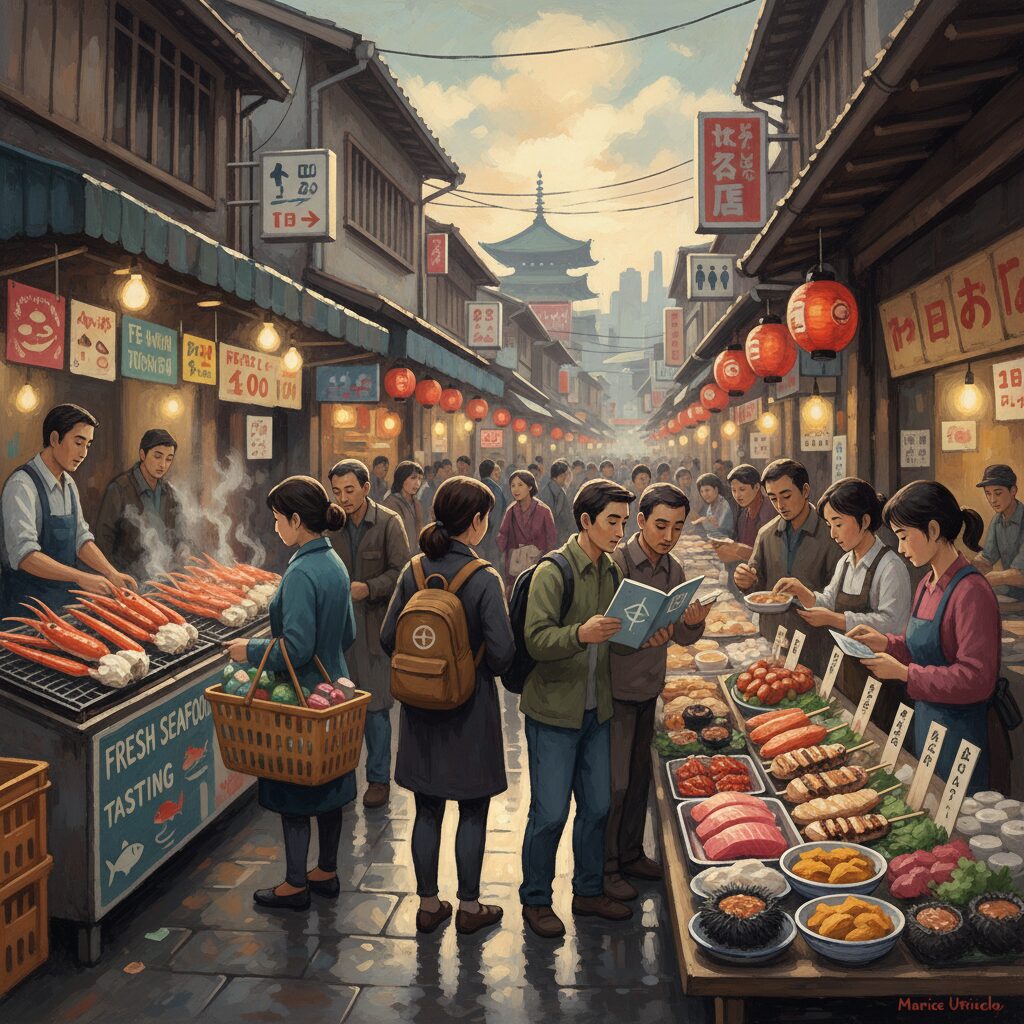
A bit of preparation can help you get the most out of your visit to this lively market. It’s a welcoming place, but keeping a few tips in mind will make your experience smooth, enjoyable, and absolutely delicious.
Timing is Key
Kuromon Ichiba attracts both locals and tourists, so it can get busy. The market generally opens around 9:00 AM, with most stalls closing by 5:00 or 6:00 PM. To enjoy the market at its liveliest, with the freshest selection, try to arrive mid-morning, between 9:30 AM and 11:00 AM. This is when the atmosphere is vibrant, and the full range of products is available. The lunch rush, from noon to about 2:00 PM, is the busiest time. If you prefer a quieter visit, consider coming in the early afternoon, though keep in mind that some popular items might be sold out. Visiting late in the day is not advisable, as many vendors will be closing up.
How to Explore and Eat
The market is essentially one long main street with a few smaller side paths. The best way to explore is to walk the entire length first to get an overview and see all your options before making purchases. This helps you prioritize what you want to try most. When you spot something you’d like to eat, just point. Most vendors are used to international visitors, and a smile and a point usually suffice. Many stalls have small designated eating areas—sometimes just a counter or a few stools—where you can stand and enjoy your food. It’s polite to eat in these designated spots or near the stall where you bought your food, rather than walking around while eating, which can be tricky in the crowded aisles. Please be sure to dispose of your trash in the provided bins.
Cash is King
Although Japan is increasingly credit card-friendly, traditional markets like Kuromon still rely heavily on cash. While some larger shops may accept cards, the smaller food stalls almost exclusively deal in Japanese Yen. It’s best to bring a good amount of cash to avoid inconvenience. This way, you can freely sample items from any stall that interests you without worrying about payment methods. Having smaller bills and coins on hand also makes transactions quicker.
What to Wear and Bring
Comfort is essential for a market visit. You’ll be on your feet for several hours, walking and standing, so wear comfortable shoes. Since the floor can sometimes be wet, closed-toe shoes are recommended. Dress in layers because the market can get warm from grills and body heat. Bring a small bag or backpack to carry your purchases, but keep it compact to navigate the narrow walkways easily. Lastly, come with an open mind and a hearty appetite. Being willing to try unfamiliar foods is where the true magic of Kuromon Ichiba shines.
The Heartbeat of Osaka
Kuromon Ichiba Market is far more than just a collection of stalls. It stands as a cultural institution, a place where the spirit of Osaka is vividly displayed. It embodies the `kuidaore` philosophy, celebrating the joy that comes from sharing great food. The vendors, many of whom are second or third-generation owners, serve as the guardians of this tradition. Their pride in their products is unmistakable, and their skill is evident. They are not merely selling fish; they are sharing a piece of their heritage. Taking a moment to watch them—the way a fishmonger’s knife glides through the fish, or the care with which a vendor arranges a display of strawberries—deepens the appreciation of the experience. This market has nourished the city for generations, through both hardship and prosperity. It has adapted over time, welcoming travelers from around the world, yet it has never lost its authentic, local soul. When you dine at Kuromon, you partake in a rich and delicious history. You connect with the very essence of what makes Osaka one of the greatest food cities on earth. So come hungry, come curious, and leave with a full stomach and a heart filled with memories. This is Osaka’s Kitchen, where everyone is invited to the table.
